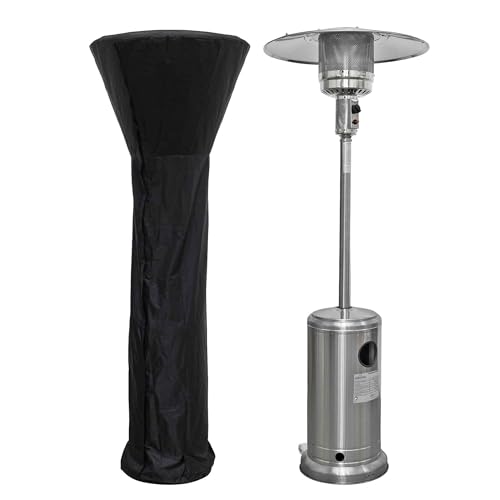The Essential Guide to Garden Heaters in the UK
As the nights attract and the seasonal chill begins to seep into the air, garden areas frequently get less attention. However, with the aid of garden heaters, home and outdoor enthusiasts can extend their pleasure of these areas well into the cooler months. In Outdoor Space Heaters , garden heaters have evolved into an essential feature that adds warmth, atmosphere, and functionality to gardens. This short article explores the various types of garden heaters available, their benefits and disadvantages, and helpful suggestions for choosing the best option for your outdoor location.
Tabulation
- Kinds Of Garden Heaters
- Gas Heaters
- Electric Heaters
- Wood-Burning Heaters
- Patio Umbrella Heaters
- Fire Pits
- Benefits and Disadvantages of Garden Heaters
- Choice Guide for Garden Heaters
- FAQs
- Conclusion
1. Kinds Of Garden Heaters
When picking a garden heater, it is very important to consider how successfully it warms the space while also complementing the overall aesthetic of the garden. Below are the most common types of garden heaters offered in the UK market.
Gas Heaters
Gas heaters are powered by propane or butane, providing an effective source of heat that can warm a large area quickly. They are typically seen at outdoor dining establishments and coffee shops because of their performance.
Pros:
- High heat output
- Mobility
- Appropriate for large areas
Cons:
- Requires routine refilling of gas
- Some models can be expensive
Electric Heaters
Electric heaters are getting popularity in residential gardens due to their benefit and ease of use. Available in different designs, they can be installed to a wall, set up in a ceiling space, or placed as freestanding units.
Pros:
- Easy to operate
- No requirement for gas refills
- Readily available in varied designs
Cons:
- Dependent on electricity supply
- May have greater running costs compared to gas
Wood-Burning Heaters
Wood-burning heaters and stoves use a rustic appeal, ideal for creating a relaxing environment in the garden. They can work as barbecues and heating sources, making them multi-functional.
Pros:
- Provides a standard visual
- Can also be utilized for cooking
- Ecologically friendly if using sustainable wood
Cons:
- Requires more upkeep
- May produce smoke and ash
Patio Umbrella Heaters
Patio umbrella heaters are a great choice for those with outdoor dining sets. These heaters are generally developed to fit below a patio umbrella, offering heat to restaurants without blocking the view.
Pros:
- Compact and space-saving
- Easy to keep when not in usage
Cons:
- Limited heating radius
- Less effective compared to other designs
Fire Pits
Fire pits have become staples in numerous UK gardens, working as both a heat source and a design function. Available in different shapes and products, they create a social hub for events.
Pros:
- Provides both heat and environment
- Suitable for social events
Cons:
- Requires guidance
- Not ideal for little areas
2. Benefits and Disadvantages of Garden Heaters
Choosing the ideal garden heater includes weighing the benefits and drawbacks associated with each type.
| Type | Advantages | Downsides |
|---|---|---|
| Gas Heaters | Quick heat, portable | Routine gas refills, expense |
| Electric Heaters | Convenient, varied designs | Dependent on electrical power, running expenses |
| Wood-Burning Heaters | Rustic appeal, multi-functional | Maintenance needed, can produce smoke |
| Patio Umbrella Heaters | Compact, simple to keep | Minimal heating radius |
| Fire Pits | Warmth with ambience, social gathering | Requires supervision, space intake |
3. Choice Guide for Garden Heaters
Picking the ideal garden heater includes thinking about numerous elements. Here are tips to bear in mind:
- Space: Measure your outdoor location to determine the size and output of the heater required.
- Budget plan: Set your budget early, thinking about both the initial financial investment and continuous running costs.
- Style: Choose a heater that complements your garden's design and environment.
- Portability: Consider whether you need a fixed unit or one that can be quickly moved and kept.
- Environment: Assess if you want an environment-friendly choice like a wood-burning heater or if electrical or gas will suit your needs better.
4. Frequently asked questions
Q: How much heat does a garden heater produce?A: Heat output varies by model, usually ranging from 5 to 15 kW. Bigger areas might need heaters with greater outputs.
Q: Are electrical heaters safe to use outdoors?A: Yes, but ensure they are specifically designed for outdoor use to endure the aspects and prevent mishaps.
Q: Can garden heaters be utilized throughout the rain?A: While some heaters are water resistant or water-resistant, using any electrical heater in a downpour is not encouraged. Gas heaters might be more resistant.
Q: Do I need an authorization for a wood-burning heater?A: In some areas, wood-burning ranges may require a permit or needs to stick to particular regulations. Always examine local laws.
Q: What upkeep do garden heaters need?A: Maintenance differs by type; typically, examining the gas supply, cleaning fire pits, and ensuring electric units are in great working order is recommended.
As the UK garden season advances beyond summertime, the inclusion of a garden heater can transform an outdoor space into a year-round sanctuary. By understanding the variety of heaters available, their advantages and disadvantages, and personalizing them to fit one's requirements, property owners can delight in epic events under the stars, basking in warmth and atmosphere. The option of garden heater not only impacts comfort however likewise raises the style of the garden, allowing people to delight in the excellent outdoors longer into the chillier months.

